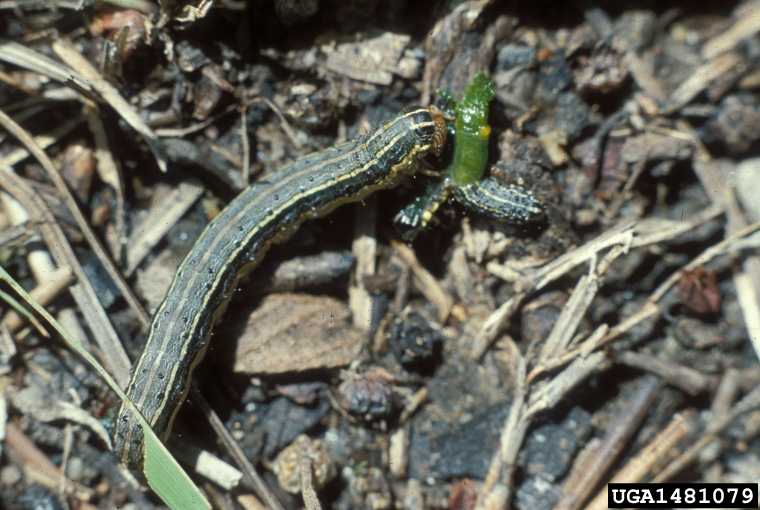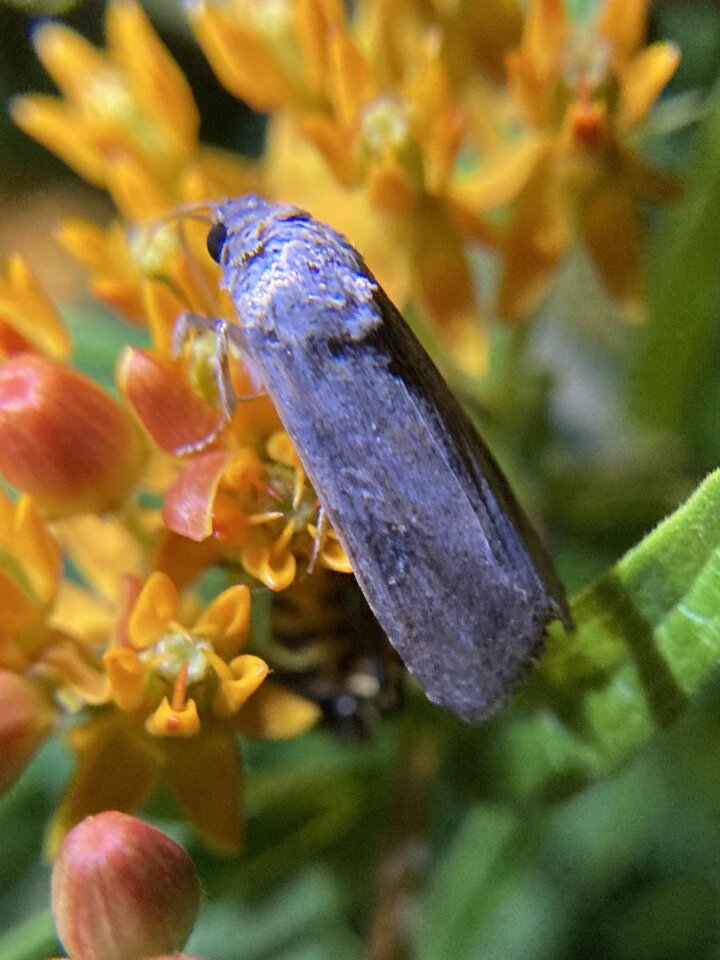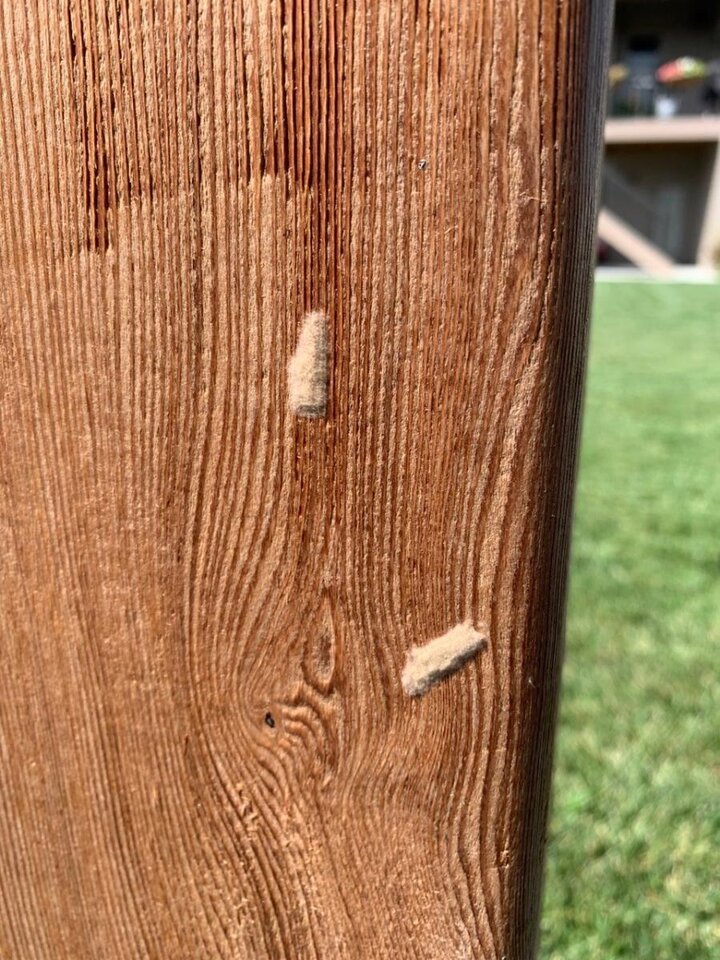Sarah Browning, Nebraska Extension Educator

Some insects only sporadically cause problems in lawns and landscapes. They are there, every year, but usually in such low numbers they can easily be overlooked. Fall armyworm is one such insect, but it appears they will not go unnoticed this year.
There are actually several species of armyworm, including common and yellowstriped, but the dominant species this year is fall armyworm, Spodoptera frugiperda. Armyworms get their common name from their tendency to move in large groups, or armies, of caterpillars.

What are they?
Fall armyworm is the caterpillar larva of a moth. It’s a tropical species, seldom surviving winter in the United States, even in the Gulf coast states. But the adult moths are good flyers and migrate north every year from their overwintering sites in the extreme southern tips of Texas and Florida, as well as Mexico and Central America, often establishing themselves as far north as New England by early summer.
Adult moths are similar to cutworm moths, having dark gray forewings mottled with lighter and darker patches. Their wingspan is about 1.5 inches and they have a whitish patch near the wing tip.
Caterpillars range in color from light tan to green, or nearly black. They have light and dark stripes running the length of their body and an inverted white Y on the head, which distinguishes them from other armyworm species and cutworms.

Damage
Adult moths cause no damage, but in the next few weeks may be seen feeding on flower nectar. Females lay eggs in masses, several hundred eggs each, on flat surfaces like tree leaves, light posts or fence rails. They are attracted to lights at night, resulting in higher amounts of eggs laid nearby. They prefer to lay eggs near favored grasses, especially actively growing turf that has been recently fertilized. Egg masses are light gray and covered with grayish fuzz.
During the last week of August, Nebraska Extension entomologists began receiving reports of high numbers of flying adults and egg laying in eastern parts of the state. Jody Green, Nebraska Extension entomologist, reports egg masses (40 in one yard) found in Lincoln. That means this week feeding may begin from the newly hatched young caterpillars.

Armyworm caterpillars feed primarily on grasses, including tall fescue, fine-leaf fescues, Kentucky bluegrass, perennial ryegrass and bentgrass. They can also be found on sweet corn, beans, other vegetables, flowers and fruit trees. In sweet corn, larvae tunnel into ears from the tip or sides causing damage similar to corn earworm. They are common in soybean or corn fields and will move into turf when their food supply is gone.
In turfgrass, caterpillars devour entire leaves resulting in rapidly spreading brown patches. Close inspection easily shows the caterpillars’ presence. Severe leaf loss exposes turfgrass crowns to direct sunlight and high temperatures making them susceptible to desiccation and death, so it’s important to control the insects before total leaf loss occurs.
Control
Armyworms can be controlled with contact insecticide spray applications using products such as those below.
- Azadirachtin - Azaguard Botanical Insecticide and others
- Bacillus thuringiensis – Dipel, Thuricide
- Bifenthrin - Ortho Bug B-Gon Lawn Insect Killer
- Deltamethrin – Hi-Yield Turf Ranger Insect Control
- Gamma-cyhalothrin – Spectracide Triazicide Insect Killer
- Imidacloprid + cyfluthrin – Bioadvanced Complete Insect Killer
- Permethrin – Hi-Yield 38 Plus Turf, Termite and Ornamental
- Spinosad - Captain Jack’s Dead Bug Brew, Fertilome Borer, Bagworm, Tent Caterpillar and Leafminer Spray
- Trichlorfon – Bayer Advanced 24 Hour Grub Killer Plus
Mow the turf before treating, to shorten the turf height and make coverage easier. Mowing also removes weed flower heads that may attract pollinators, which would be killed by an insecticide application. Spray early or late in the day when insects are most active. On thick, well-established turf use a minimum of 1 gallon of water per 1000 square feet to be sprayed. Follow product label direction on chemical use rates.
Professional turf managers are reporting good control from chlorantraniliprole, the active ingredient in Scott’s GrubX. So homeowners who applied this product in spring, may not see problems in their turf.
Lawn Recovery
To prevent grass crown desiccation, keep damaged areas watered until new leaf blades begin to appear. Apply a fall fertilizer in early September to help grass recover. Overseed heavily damaged areas that do not recover on their own.
More information.
Images
- Fall armyworm caterpillar. Image from Frank Peairs, Colorado State University.
- Female fall armyworm on butterfly milkweed. Jody Green, Nebraska Extension
- Fall armyworm egg masses on post. Jody Green, Nebraska Extension
- Male fall armyworm on sedum. Jody Green, Nebraska Extension
Search Our Archive
Associated Video
Managing Fall Armyworms
Nebraska Extension Urban Entomologist Jody Green and Nebraska Extension Turfgrass Specialist Roch Gaussoin discuss higher numbers of armyworm egg cases being reported and how homeowners can manage them if they emerge to damage turf.